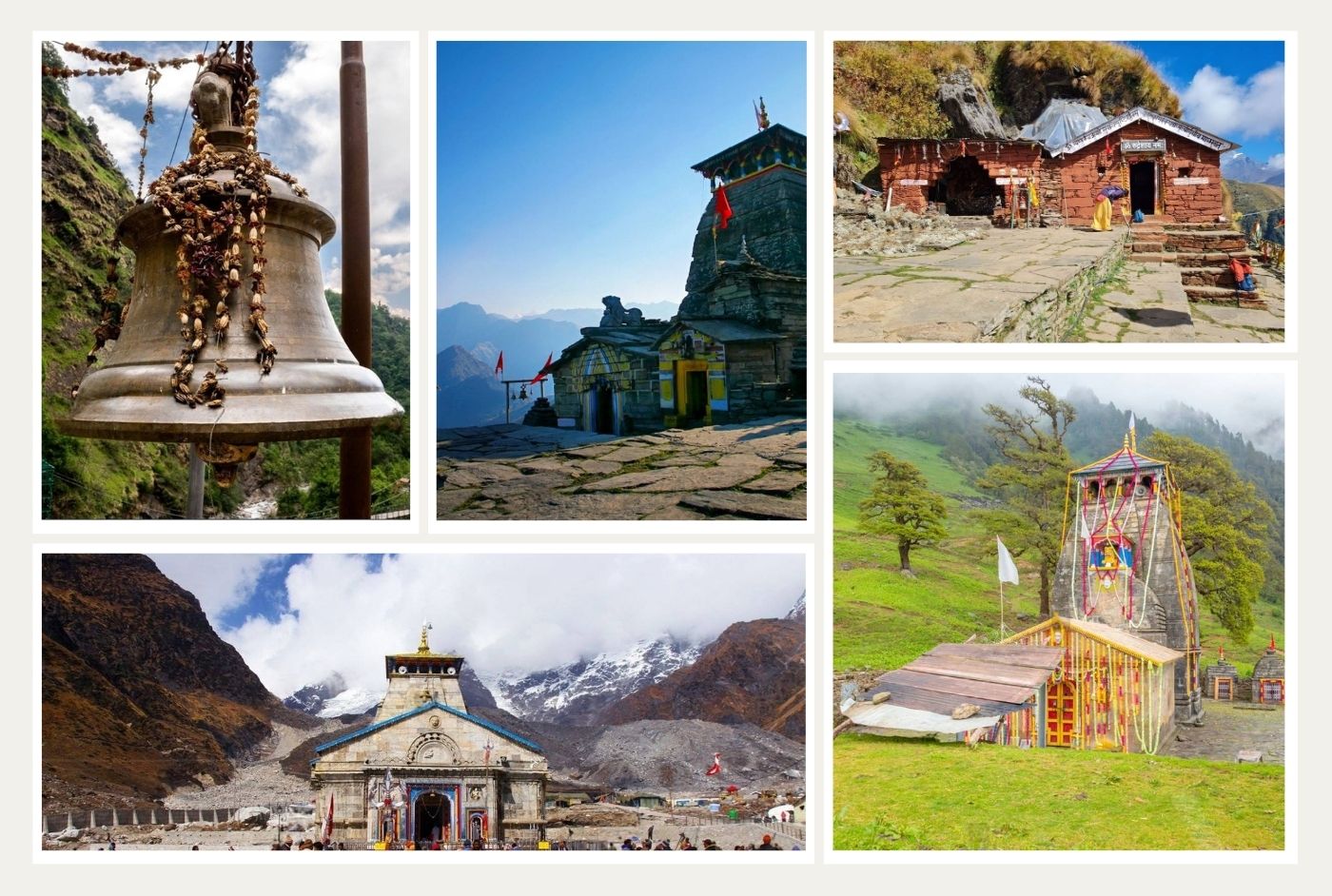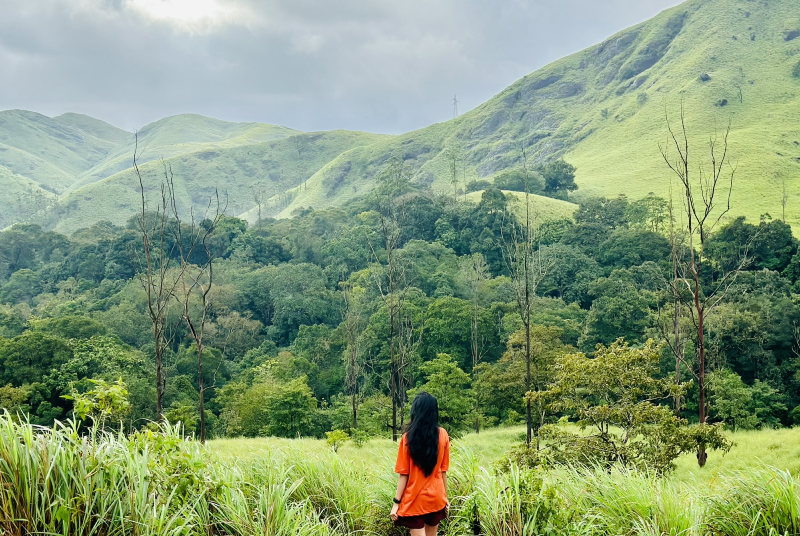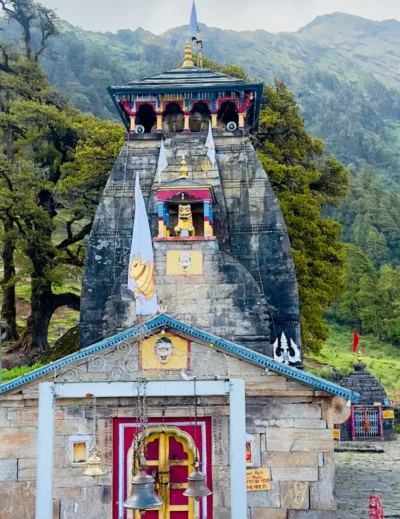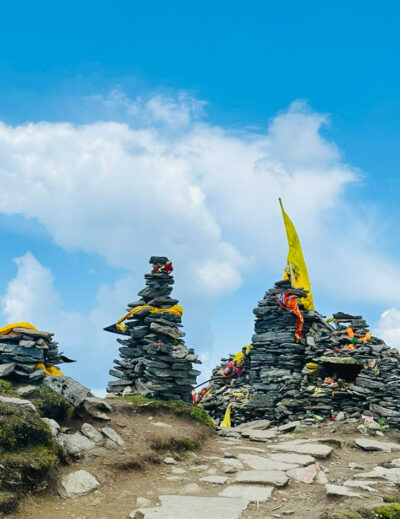
What is Panch Kedar?
A Sacred Journey Through Shiva’s Hidden Shrines in the Himalayas
When we talk about the mystic folds of the Indian Himalayas, there’s one pilgrimage that quietly calls out to seekers, trekkers, and spiritual wanderers — the Panch Kedar Yatra. Rooted deeply in Sanatana Dharma and legends from the Mahabharata, Panch Kedar isn’t just about visiting five temples — it’s about walking through the silence, surrender, and strength of Shiva himself.
The Sacred Origins — A Story Rooted in the Mahabharata
Long ago, after the devastating war of Mahabharata, the Pandavas were filled with guilt for the immense bloodshed. They sought redemption and forgiveness from Lord Shiva, the destroyer and transformer — the supreme force of cosmic balance. But Shiva, unwilling to forgive them so easily, took the form of a bull and fled into the Himalayas to avoid meeting them.
Determined, the Pandavas chased him.
At Guptkashi, Shiva vanished into the earth — but Bhima, the strongest Pandava, managed to catch hold of the bull’s hump. Shiva then split into five parts, which manifested at five sacred locations across Uttarakhand. These five places became known as the Panch Kedar — the five holy abodes of Lord Shiva:
- Kedarnath – where the hump appeared
- Tungnath – the arms
- Rudranath – the face
- Madhyamaheshwar – the navel
- Kalpeshwar – the matted hair (jata)
This myth isn’t just about Shiva eluding his seekers — it’s about the truth that divine grace comes only after humility, persistence, and surrender.
What Makes Panch Kedar So Special?
This yatra is not about grand architecture or rituals alone. It’s about the rawness of nature, the endurance of your spirit, and the quiet faith that builds with each step.
Most of the temples are accessible only by foot — some requiring multiple-day treks through thick forests, bugyals (alpine meadows), river crossings, and ancient trails. You’re not just going to temples — you’re walking through time, myth, and meaning.
Unlike many other pilgrimages, Panch Kedar is not crowded, not overly commercial — it’s sacred, untouched, and calls only those who are meant to arrive.
Panch Kedar Temples – At a Glance
| Temple Name | Altitude (approx.) | Location | Shiva’s Form |
|---|---|---|---|
| Kedarnath | 3,583 m (11,755 ft) | Rudraprayag district | Hump of Nandi |
| Tungnath | 3,680 m (12,073 ft) | Rudraprayag district | Arms |
| Rudranath | 3,600 m (11,800 ft) | Chamoli district | Face |
| Madhyamaheshwar | 3,289 m (10,790 ft) | Rudraprayag district | Navel & stomach |
| Kalpeshwar | 2,200 m (7,217 ft) | Chamoli (Urgam Valley) | Jata (Hair) |
Each Kedar feels different — the landscape, the aura, the effort to reach, the kind of thoughts that arise.
You feel strength in Kedarnath, gentleness in Kalpeshwar, mystery in Rudranath, stillness in Tungnath, and surrender in Madhyamaheshwar.
Why I Chose This Yatra
For years, I’d read and heard about Panch Kedar. But no book or video could prepare me for what I felt out there.
I didn’t go just to see temples. I went because something within me was longing for quiet answers. For me, it wasn’t just a trek — it was a call.
Each step I took brought me closer to something I couldn’t name.
Meeting people on the trail who offered chai and stories, witnessing the Sandhya Aarti in a cave temple, climbing through stormy meadows to glimpse a shrine tucked between clouds — these weren’t just travel moments; they were soul imprints.
To feel the presence of Shiva — not in idol form, but in wind, stone, and silence.
This yatra didn’t give me everything I expected — it gave me what I needed.
If my journey through Panch Kedar moved something within you
Final Thoughts
Panch Kedar is not just a journey across temples — it’s a journey across layers of yourself.
If you’re ready to walk with reverence, to let go of comfort, and to meet silence on mountain paths — Shiva might just meet you halfway.
This blog is the beginning of my Panch Kedar stories — I’ll soon be sharing my personal experience at each temple.
But before that, I wanted you to know where it all begins.
Har Har Mahadev! 🙏🏻
When is the best time to do the Panch Kedar Yatra?
May to mid-June and September to October are ideal. Monsoons can bring landslides, and winters make most of the temples inaccessible (except Kalpeshwar).
Do I need to trek all of them?
Yes, except Kalpeshwar, all require trekking. Trek durations range from 3km to 20+ km. The trails vary in difficulty.
Do I need to do them in a specific order?
There is no fixed order, but many pilgrims follow this traditional route: Kalpeshwar → Rudranath → Tungnath → Madhyamaheshwar → Kedarnath.
Do I need a guide or permit?
Local guides are helpful but not mandatory. No permits are currently required, but always check local guidelines before you go.
Where do I stay?
Homestays and basic lodges are available near most base villages. In remote areas like Rudranath, you might stay in tents or forest huts.
Can beginners do this trek?
With basic fitness and preparation, yes! But Rudranath and Madhyamaheshwar are relatively harder, especially if carrying heavy backpacks.
Rinkal
Rinkal is a passionate traveler from Ahmedabad who loves exploring hidden gems, savoring local foods, and sharing adventures with fellow wanderers. Rinkal’s goal is to inspire others to travel on a budget while truly experiencing the essence of each place.











Himani
June 14, 2025
🙏